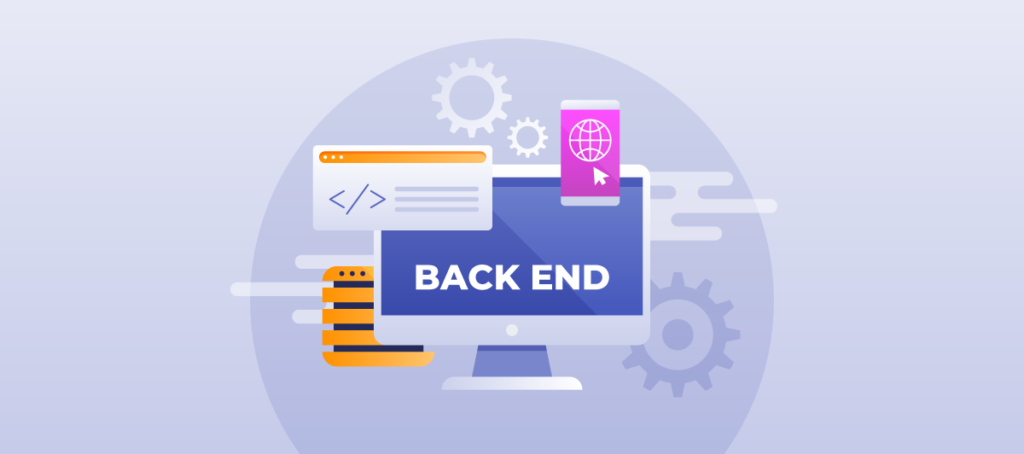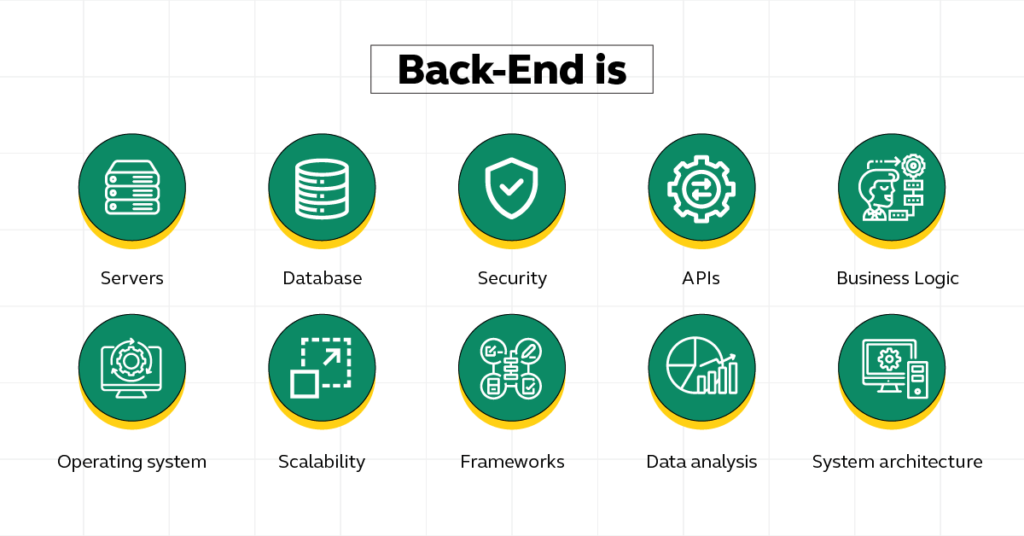In the world of computer programming, back-end development is often the “invisible” side of creating websites and applications. While front-end development is responsible for the visual elements users interact with, back-end development powers the behind-the-scenes logic, databases, and server management that ensure an application runs smoothly. For anyone new to coding, diving into back-end development may seem daunting, but with the right approach, it can be incredibly rewarding. In this guide, we’ll break down the basics of back-end development and explore how to build a strong foundation.

What is Back-End Development?
Back-end development focuses on the server side of applications, which includes managing data, handling requests, and ensuring the application performs reliably. It typically involves working with databases, server-side programming languages, and APIs (Application Programming Interfaces) that allow the back end to communicate with the front end.
Back-end development is essential for building robust, dynamic applications that require data management, user authentication, and secure transactions. From social media platforms to e-commerce sites, back-end development is a core component of today’s most popular applications.
Essential Components of Back-End Development
To understand back-end development, let’s take a look at some of the key components that power the back end of an application.
1. Server-Side Languages
Programming languages used on the server side include Python, JavaScript (Node.js), Ruby, Java, and PHP. Each language has its strengths, and choosing one often depends on the specific requirements of the project and the developer’s familiarity with the language.
For beginners, Python and Node.js are excellent starting points due to their readability, robust libraries, and extensive community support. Many online coding tutorials offer step-by-step guides in these languages, making them accessible for beginners.
2. Databases
Databases are where data is stored, retrieved, and manipulated. There are two main types of databases:
- SQL Databases (e.g., MySQL, PostgreSQL): Structured databases that use tables and predefined schemas.
- NoSQL Databases (e.g., MongoDB, Cassandra): Flexible databases that store data in various formats, like documents or key-value pairs.
Understanding databases is crucial for back-end developers, as they manage the data that users interact with on the front end. Many programming lessons and courses in back-end development cover database fundamentals.
3. APIs (Application Programming Interfaces)
APIs allow the front end and back end of an application to communicate. They’re used to send and receive data, process requests, and integrate third-party services. A RESTful API, for example, uses HTTP methods to perform actions like retrieving or updating data. APIs are essential for creating a seamless experience between the front end and the back end, and they are a vital skill for any back-end developer.
Getting Started with Back-End Development
For beginners interested in back-end development, here are some steps to build a strong foundation.
1. Start with Code Learning Basics
Before diving into back-end development, it’s essential to build a foundation in code learning. Start by familiarizing yourself with one of the commonly used back-end languages, like Python or JavaScript (Node.js). Begin with understanding syntax, variables, functions, and loops, as these will form the basis for more complex back-end concepts.
Platforms like Codecademy and freeCodeCamp provide beginner-friendly courses that introduce programming fundamentals. Consistent practice with coding exercises can also accelerate your learning.
2. Practice with Coding Exercises and Challenges
Once you’ve built a foundation, engage in coding challenges to strengthen your problem-solving skills. Platforms like LeetCode and HackerRank offer challenges that focus on algorithms, data structures, and logic building. These are valuable for back-end developers because they help improve efficiency and prepare you for real-world applications.
Coding challenges also introduce you to algorithms commonly used in back-end development, such as search and sort algorithms, which are essential for managing data and optimizing performance.
3. Explore Data Structures
Data structures are an essential component of back-end development, as they organize and store data for efficient access and modification. Common data structures include arrays, linked lists, stacks, queues, and hash tables. Learning these data structures will enable you to handle data effectively and optimize your applications.
Understanding data structures is crucial for developers interested in full-stack development as well, as these skills are valuable on both the front-end and back-end sides of programming. An algorithms course can provide an in-depth look at data structures and how to use them effectively.
4. Build Small Programming Projects
One of the best ways to learn back-end development is by creating programming projects that allow you to apply what you’ve learned. Here are some beginner project ideas:
- To-Do List App: Create a to-do list with CRUD (Create, Read, Update, Delete) functionality. This project introduces you to database operations and basic server management.
- Blog Platform: Build a blog where users can post, edit, and delete articles. This project involves working with databases and user authentication.
- Weather App with API Integration: Use an API to retrieve weather data and display it. This project familiarizes you with API requests and handling JSON data.
These projects provide hands-on experience and reinforce core back-end concepts. They also serve as portfolio pieces, demonstrating your skills to potential employers.
5. Understand Server Management and Hosting
A significant part of back-end development is managing the servers that host applications. As a beginner, it’s beneficial to understand how servers work, how to configure them, and how to deploy applications. Platforms like Heroku and DigitalOcean make it easier for beginners to deploy web applications and manage servers.
Learning the basics of server management will give you a practical understanding of how web applications operate. Additionally, server management skills are essential for those interested in full-stack development, as they bridge the gap between front-end and back-end operations.
6. Participate in Coding Workshops
Joining coding workshops is a great way to accelerate your back-end development skills. Workshops offer structured learning experiences and cover various topics, from basic server setup to advanced API integration. They provide the opportunity to work with mentors, ask questions, and collaborate with other learners.
Coding bootcamps often offer specialized back-end development tracks, allowing you to focus on essential skills while working on real-world projects. Additionally, workshops often include coding exercises and collaborative projects, reinforcing your learning and helping you build a strong foundation in back-end programming.
The Benefits of Back-End Development
Back-end development offers several advantages for aspiring programmers. First, it’s a highly versatile skill, applicable to a wide range of applications, from e-commerce websites to social media platforms. Second, back-end development is in high demand, with businesses increasingly relying on data-driven and cloud-based solutions. Finally, back-end skills are transferable, allowing you to branch into specialized fields like database administration, cloud computing, and cybersecurity.
As technology continues to evolve, back-end development remains a critical area in software engineering, creating countless job opportunities for skilled developers.

Start Your Journey in Back-End Development
Unlocking the power of back-end development begins with understanding the basics of server-side programming, databases, and data management. By mastering fundamental skills, practicing with coding exercises, and building programming projects, you can lay a solid foundation for a successful career in back-end development.
Remember, coding is a journey, and each project, workshop, and coding lesson brings you closer to becoming a proficient back-end developer. Embrace the learning process, stay consistent, and don’t hesitate to seek out resources like coding workshops and online courses to guide you along the way.




